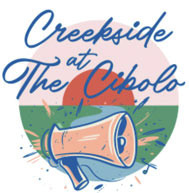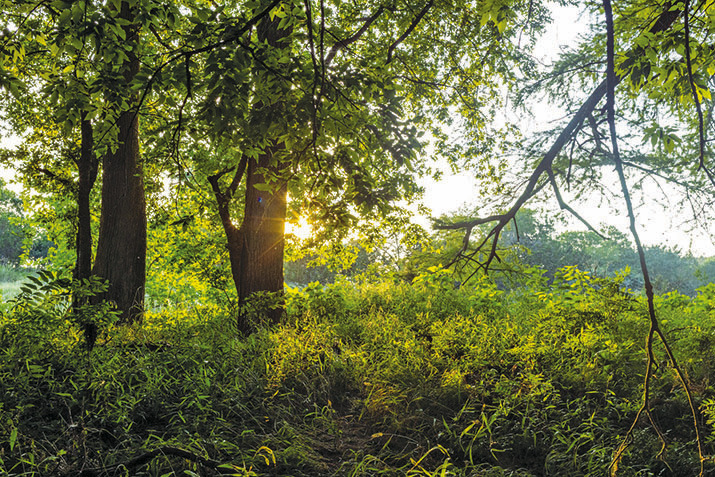CREEKSIDE AT THE CIBOLO
‘The Light Season’ is here so let the plant and land snobbery begin.
As a follow up to my “ Dark Season Field Work,” article published in winter, it is time to get afield to see how your land management efforts are growing and performing.
Now that everything has had a healthy dose of rain and some extended photo period, it is time to identify. Everything is green but very different in function and purpose.
Identification is everything. Whether by leaf, fruit, seed or color, it is super easy. Having a firm understanding of your local citizenry can guide your timeline and hone your practices.
Some helpful cruising tools might include a roll of flagging tape and a Sharpie marker. The ability to make quick notes on the flagging tape is fantastically helpful for later reference, identification, and group work directives.
Marshall Enquist’s “Flowers of the Texas Hill Country” is my “go to” resource when questions arise. There are many digital resources that are very helpful, but nothing beats a well-used print resource.
Trees. The trees are doing their thing; making shade, making leaves and making mast.
You may notice that some trees are hanging a little “low” but that is by design. Some trees like the black walnut and Bois d’Arc hang a little lower due to the fruited limb load so give them some grace during the fruit season.
The light season is a time of curative growth in trees, so hold off on your pruning efforts. Heat, humidity and photoperiod are the golden standard for fungus, bacteria and insects (FBI), so tread lightly.
If you happen to cross summer pruning threshold, it is critically important to promptly paint every cut (oaks are the priority). Woody summer growth is a blessing in disguise since it can easily correct previous pruning mistakes like the “lollipop” or “pinwheel.”
Since everything is growing vigorously in the early summer months, some of us feel the seasonal urge or yearning to mow/prune/remove (MPR). There are two ways to look at MPR: Around your home and yard, and around the wildland. Growth is what we are looking to achieve in these areas, which harkens back to the functionality of the land.

Yes, you can mow your yard for aesthetics and maintain your Frankensteins laboratory in the backyard. Mowing the quasi- wildlands that are rich in floral diversity should not be mowed until the second week of July to ensure adequate seedhead maturity and reseeding of that area.
A clever way to mitigate the mowing experience is to “high deck” the wilder areas to allow for double growth of natives while maintaining soil moisture. Less is more.
While you are cruising your property and making notes, don’t forget to harvest seeds from your favorite plants. The Native Plant Society of Texas Boerne Chapter has started a seed library at the Partrick Health Library in Boerne to share with the community. Harvest, dry and sort your seeds and donate them to the library seed bank for others to use on their land.
Everyone has their own niche or specialty, so you can find a great variety of super native seeds for your property.
If you would like to learn more about seed sourcing, tree identification, trade craft, soil management, nesting boxes riparian management, land management, surface water, soft edge establishment, media lunas, Zuni bowls, erosion control, composting, irregular land management, mulching, outdoor education, or just want to talk, feel free to stop by the Cibolo Center for Conservation, jump in the buggy and let’s roll.
Phone a friend when in doubt; avoid volcano mulching; and see you in the woods!
David Touchon is Land Manager for The Cibolo Cetner for Conservation.

The time is now to learn more about proper identification of the watered and greening summer growth. Photo courtesy of Connor Engel, The Cibolo








Comment
Comments